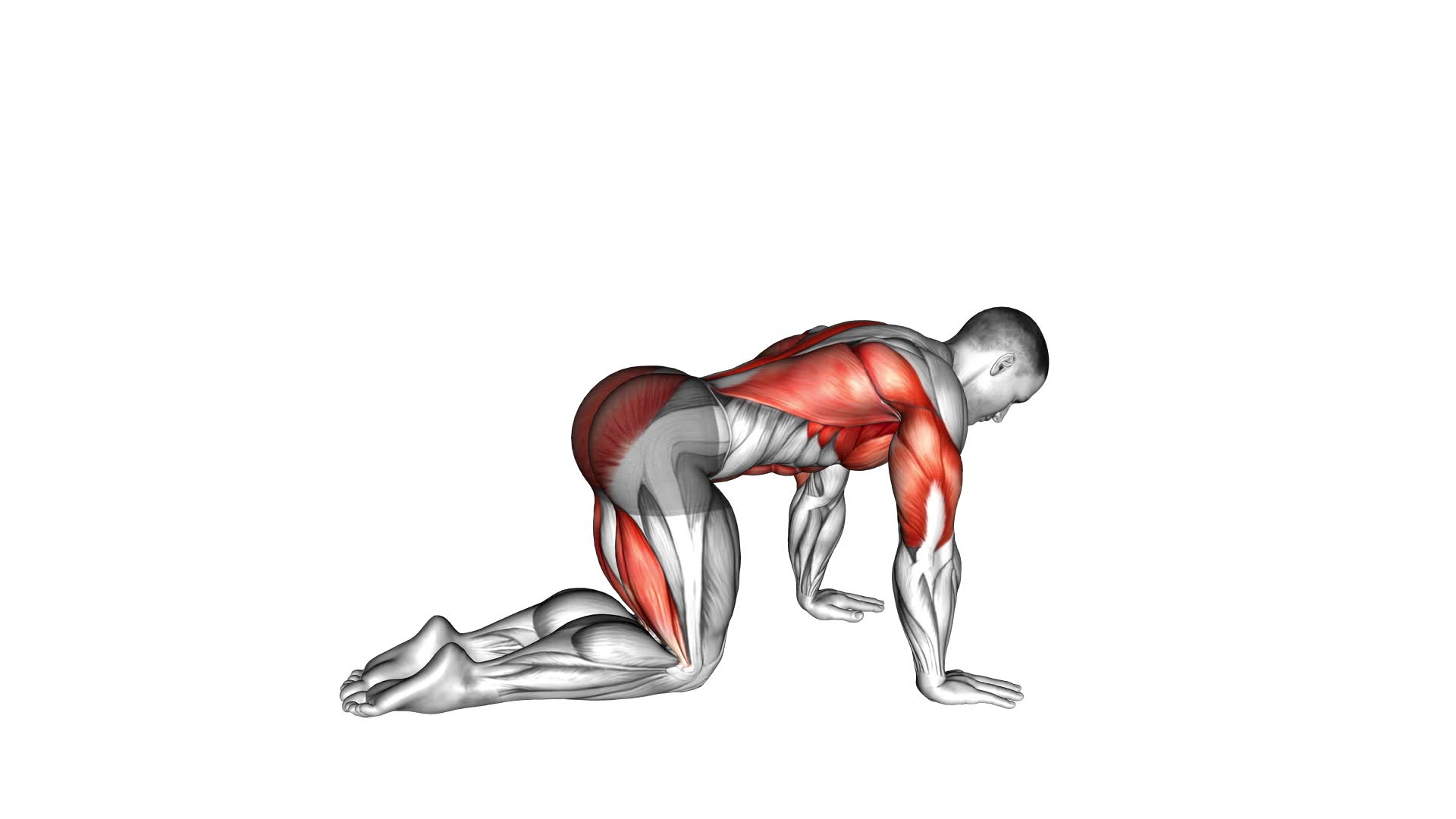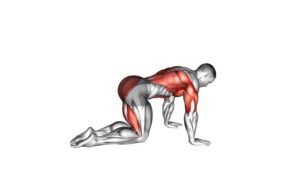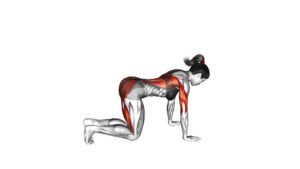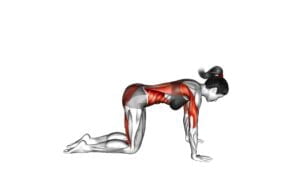Sliding Leg Bird Dog – Video Exercise Guide & Tips

Looking to strengthen your core and improve stability? The sliding leg bird dog is the perfect exercise for you.
Watch This Exercise Video
In this video exercise guide, you'll learn the proper technique, common mistakes to avoid, and variations to challenge yourself.
With these tips, you'll be able to get the most out of this exercise and reach your fitness goals.
So, grab a mat and get ready to feel the burn!
Key Takeaways
- The sliding leg bird dog strengthens core muscles and improves core stability.
- It targets abdominals, lower back, and glutes for a comprehensive workout.
- Proper technique includes maintaining a neutral spine and stable core while extending the leg and arm parallel to the ground.
- To make the exercise harder, you can perform it on an unstable surface, add resistance, use a stability ball, or incorporate sliders or gliders.
Benefits of the Sliding Leg Bird Dog
You can experience significant core strength gains by incorporating the sliding leg bird dog into your workout routine. This exercise is highly beneficial for improving core stability, which is essential for overall strength and balance. The sliding leg bird dog specifically targets the muscles in your core, including your abdominals, lower back, and glutes. By engaging these muscles, you can enhance your posture, reduce the risk of back pain, and improve your athletic performance.
One of the great things about the sliding leg bird dog is that it can be modified for beginners. If you're new to this exercise, you can start by performing it without the sliding component. Simply get on all fours, with your hands directly under your shoulders and your knees under your hips. Extend your right arm forward while simultaneously extending your left leg backward. Hold this position for a few seconds and then switch sides.
As you become more comfortable and confident, you can gradually introduce the sliding movement by using sliders or a towel on a smooth surface.
Incorporating the sliding leg bird dog into your workout routine can provide numerous benefits for your core stability. Don't be intimidated if you're a beginner; there are modifications available to help you get started. Start reaping the rewards of this exercise and enjoy the increased strength and stability in your core.
Proper Technique for the Sliding Leg Bird Dog
To perform the sliding leg bird dog with proper technique, begin by positioning yourself on all fours, as explained in the previous subtopic. Once you're in the starting position, ensure that your hands are directly under your shoulders and your knees are directly under your hips. Engage your core muscles to maintain stability and support your spine throughout the exercise.
To execute the sliding leg bird dog, simultaneously extend your right leg straight behind you and your left arm straight in front of you. Keep your leg and arm parallel to the ground, maintaining balance and coordination. Hold this position for a few seconds, focusing on maintaining a neutral spine and a stable core.
Next, slowly slide your right leg out to the side while keeping it straight. As you do this, slide your left arm out to the side as well. Return to the starting position by bringing your leg and arm back in. Repeat the movement on the opposite side, extending your left leg and right arm.
This exercise targets your core stability, as you work to maintain balance and coordination throughout the movement. It also engages your glutes, shoulders, and back muscles.
Transitioning into the subsequent section about 'common mistakes to avoid', it's important to be aware of these errors to ensure you're performing the sliding leg bird dog correctly and maximizing its benefits.
Common Mistakes to Avoid
Avoid these three common mistakes when performing the sliding leg bird dog exercise:
- Arching your back: Keep your spine in a neutral position throughout the movement. Avoid arching your back, as this can put unnecessary strain on your lower back and lead to discomfort or injury. Engage your core muscles to help maintain proper alignment.
- Raising your shoulder: Keep your shoulder level and avoid lifting it towards your ear. Raising your shoulder can cause imbalance and decrease the effectiveness of the exercise. Focus on keeping your shoulder stable and in line with your hips.
- Losing control of your leg: Maintain control and stability as you slide your leg back. Avoid allowing your leg to swing or flop to the side. Engage your glute muscles and keep your leg straight as you extend it behind you. This will help target the correct muscles and prevent any unnecessary strain.
Variations to Make the Exercise Harder
To further challenge yourself and increase the intensity of the sliding leg bird dog exercise, consider incorporating these variations into your routine.
First, you can try advanced modifications for the sliding leg bird dog. One option is to perform the exercise on an unstable surface, such as a balance board or a BOSU ball. This will engage more muscles in your core and challenge your balance and stability.
Another modification is to add resistance by using ankle weights or resistance bands. This will increase the workload on your glutes and hamstrings, making the exercise more challenging.
Additionally, incorporating equipment can create an intense sliding leg bird dog workout. One option is to use a stability ball. Place your hands on the ball instead of the floor, and perform the sliding leg bird dog. This will require more core stability and control.
Another option is to use sliders or gliders under your hands and feet. This will increase the difficulty of the exercise as you slide your limbs out and back in.
Remember to always maintain proper form and listen to your body. Start with modifications that suit your fitness level and gradually progress as you get stronger.
Incorporating these variations and equipment won't only challenge your body but also add variety to your workouts, keeping you motivated and engaged.
Tips for Getting the Most Out of the Sliding Leg Bird Dog
Maximize your results with the sliding leg bird dog by focusing on proper form and engaging your core. Here are some tips to help you get the most out of this exercise:
- Keep your spine in a neutral position throughout the movement. Avoid arching or rounding your back.
- Engage your core by pulling your belly button towards your spine. This will help stabilize your body and prevent excessive movement.
- Start with slow and controlled movements. This will allow you to maintain proper form and engage the right muscles.
- For beginners, you can modify the exercise by keeping your knees on the ground instead of extending your legs. This will reduce the difficulty and allow you to focus on mastering the movement.
- As you progress, gradually increase the range of motion by extending your legs further and reaching your arm out in front of you.
- Remember to breathe throughout the exercise. Inhale as you extend your leg and exhale as you bring it back in.
Frequently Asked Questions
How Many Reps and Sets Should I Do of the Sliding Leg Bird Dog?
To determine the number of reps and sets for the sliding leg bird dog, it's important to consider your fitness level and goals. Start with 2-3 sets of 10-12 reps per side and adjust as needed.
For modifications, you can try reducing the range of motion or using a stability ball for added support. Remember to listen to your body and gradually increase intensity as you get stronger.
Is It Safe to Do the Sliding Leg Bird Dog if I Have Lower Back Pain?
If you have lower back pain, it's important to be cautious when doing the sliding leg bird dog. This exercise can put strain on your lower back if not done correctly.
Consider modifying the exercise by reducing the range of motion or using a softer surface, like a mat.
It's best to consult with a healthcare professional or a qualified fitness instructor to determine if it's safe for you.
The sliding leg bird dog can be beneficial for core strength when done properly.
Can I Do the Sliding Leg Bird Dog as a Warm-Up Exercise Before My Main Workout?
Yes, you can definitely do the sliding leg bird dog as a warm-up exercise before your main workout. It's a great way to activate your core and glutes and prepare your body for more intense movements.
If you have any lower back pain or limitations, there are modifications you can make to ensure you perform the exercise safely and effectively.
Incorporating the sliding leg bird dog into your warm-up routine can help improve stability and prevent injury during your main workout.
How Long Does It Take to See Results From Doing the Sliding Leg Bird Dog?
To see results from the sliding leg bird dog, it depends on various factors like your current fitness level and consistency.
This exercise can improve your core strength, stability, and balance. Incorporating it into your routine can help you strengthen your back, abs, and glutes.
Can I Do the Sliding Leg Bird Dog on a Carpeted Surface Instead of a Yoga Mat?
Yes, you can definitely do the sliding leg bird dog on a carpeted surface instead of a yoga mat. It's a great alternative if you don't have a mat or prefer the feeling of the carpet.
The benefits of doing this exercise on a carpet include added stability and grip, which can make it easier to maintain proper form and prevent slipping.
Just make sure the carpet is clean and free of any hazards before you start.
Conclusion
In conclusion, the Sliding Leg Bird Dog is a beneficial exercise for strengthening the core and improving stability. By following the proper technique and avoiding common mistakes, you can maximize the effectiveness of this exercise.
Additionally, incorporating variations can increase the difficulty level and enhance the challenge. Remember to focus on form and engage your muscles during each repetition to get the most out of the Sliding Leg Bird Dog.

Author
Years ago, the spark of my life’s passion ignited in my mind the moment I stepped into the local gym for the first time. The inaugural bead of perspiration, the initial endeavor, the very first surge of endorphins, and a sense of pride that washed over me post-workout marked the beginning of my deep-seated interest in strength sports, fitness, and sports nutrition. This very curiosity blossomed rapidly into a profound fascination, propelling me to earn a Master’s degree in Physical Education from the Academy of Physical Education in Krakow, followed by a Sports Manager diploma from the Jagiellonian University. My journey of growth led me to gain more specialized qualifications, such as being a certified personal trainer with a focus on sports dietetics, a lifeguard, and an instructor for wellness and corrective gymnastics. Theoretical knowledge paired seamlessly with practical experience, reinforcing my belief that the transformation of individuals under my guidance was also a reflection of my personal growth. This belief holds true even today. Each day, I strive to push the boundaries and explore new realms. These realms gently elevate me to greater heights. The unique combination of passion for my field and the continuous quest for growth fuels my drive to break new ground.







